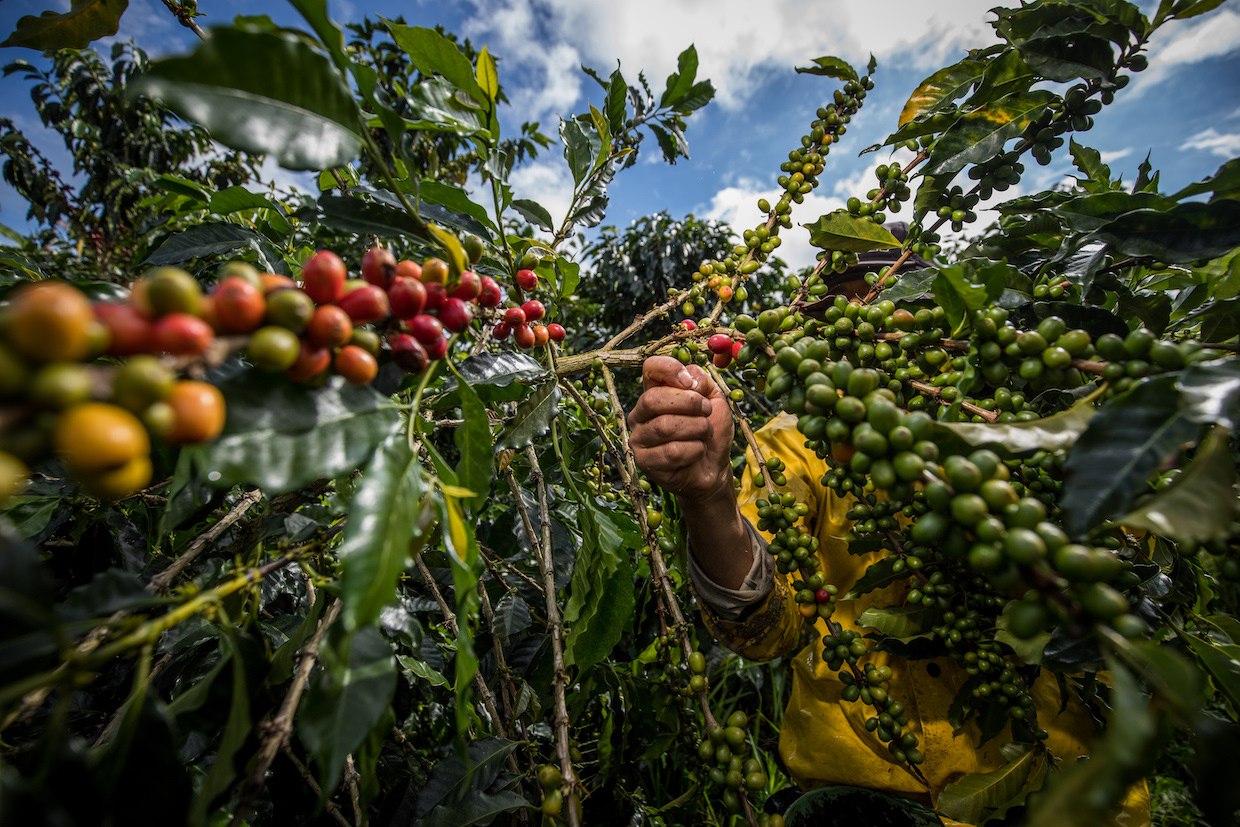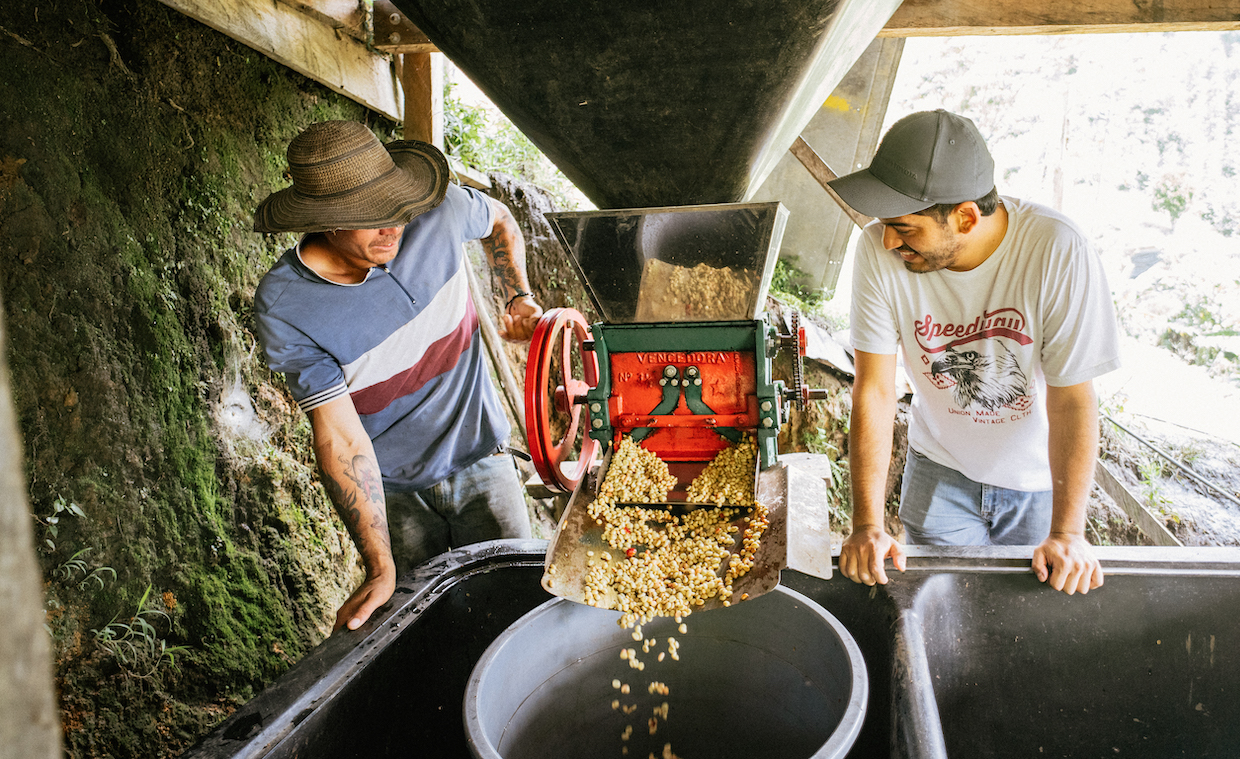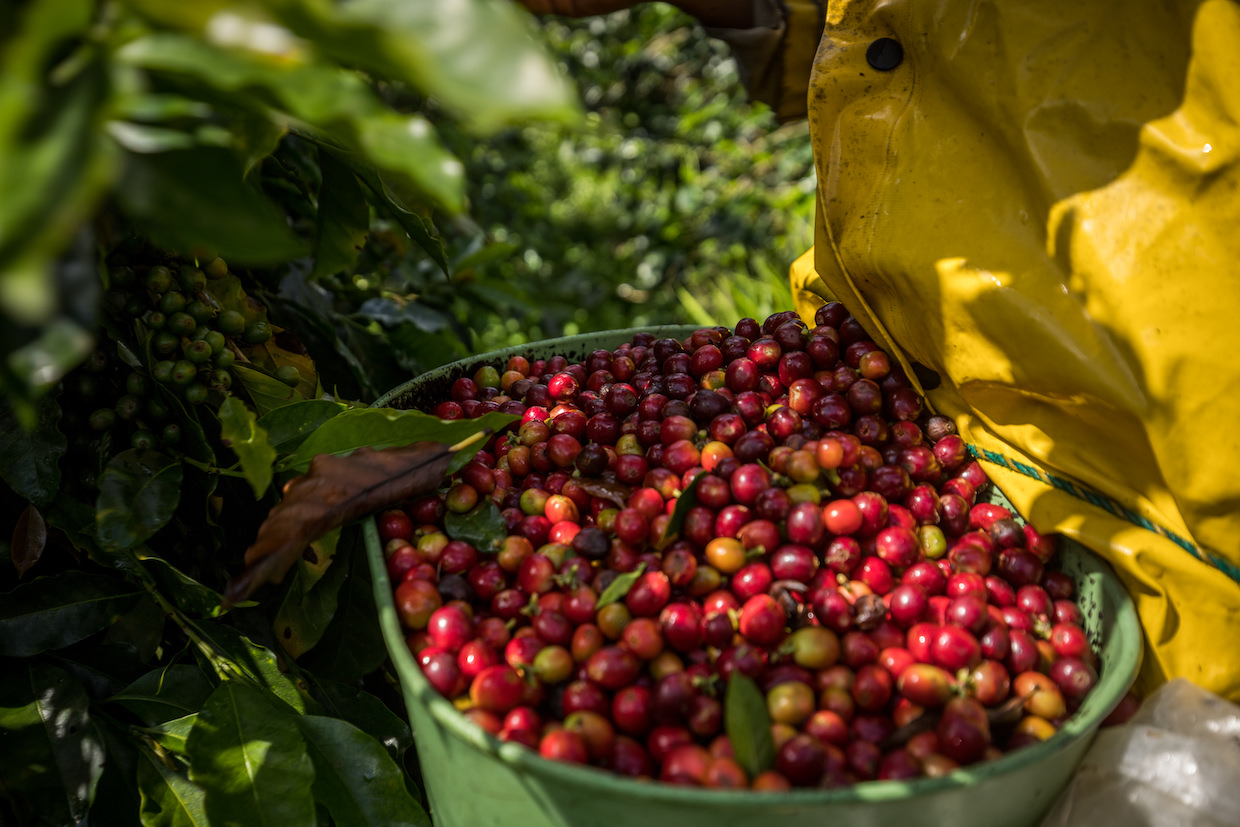
Photo courtesy of Those Coffee People.
The Colombian coffee industry is currently in the middle of its main annual harvest. As the third largest coffee producing nation in the world, achieving a successful harvest for producers is a delicate balancing act. From rainfall at the local level to consumer demand at the global level, most of the variables are beyond the control of growers.
Fortunately, in a broad sense, most of these variables appear to be in positive alignment this season, with many growers anticipating a good harvest alongside near-record high prices.
As Elkin Diosa, leader of the APROKAFES export group in Caicedo, Colombia, told me, “This year’s harvest is shaping up to be one of the strongest we’ve seen in the past few years.”
However, beneath such positive sentiments is a complex mixture of opportunities and challenges. While favorable weather conditions and high global prices promise a profitable season for many producers, the Colombian coffee sector is constantly balancing quantity and quality, to ensure short-term gains don’t come at the expense of long-term sustainability and quality goals.
Yields and Prices
Environmental conditions in Colombia have been far more favorable leading up to harvest than they have been in recent years, despite the ongoing effects of climate change.
“The rains, although slightly delayed, came just in time to support the ripening process, and the production across [Colombian growing region] Antioquia is looking very promising,” Diosa said. “We’re expecting one of the better crops in the last five years.”

Photo courtesy of Those Coffee People.
Other producers I have spoken with this harvest period were similarly optimistic, welcoming the combination of favorable weather and relatively high prices.
“Right now, coffee prices are very high, which is a relief for many of us producers,” Juan David Builes, a specialty coffee producer from Finca Los Cedros, told me. “It’s allowing us to cover rising costs and secure a profit.”
When it comes to pricing, Colombia’s idiosyncratic producer ecosystem means that, for most growers, there is a single spot price available to anyone, anywhere in the country. Unlike the industrial-sized, highly mechanized coffee farms common throughout Brazil, Colombia has maintained a large network of family-run small-to-medium sized fincas.
Most of these fincas produce insufficient output to sell directly to buyers, so instead they sell their crops to the nationwide growers-union, the Federación Nacional de Cafeteros de Colombia (FNC).
The FNC provides a floating buy rate, which is the spot price they offer to growers. The price reflects a combination of green coffee prices on the global commodity markets and the Colombian Peso (COP) to U.S. dollar (USD) exchange rate.
At the time of this writing, the buy-rate offered by the FNC is COP 2,230,000 per carga (125kg), or $526, which is the highest it’s ever been, apart from three points in 2022 when USD reached record highs against COP.
These near-record high prices are largely being driven by jitters on global commodity markets following disappointing harvests in Brazil and Vietnam, the world’s first and second largest coffee producers, respectively.
The Risks of Adverse Incentives
However, while such a high FNC buy rate is a boon to many producers, there is some concern over the incentives being created — specifically among producers and traders of specialty coffee.
“The FNC buy rate for commercial-grade coffee is so attractive right now that some producers are moving away from the specialty market, as these prices make it very tempting to focus on volume rather than quality,” said Paula Concha, a sustainablity-focused coffee producer from Finca Santa Elena.
Builes said that “if commercial-grade coffee is paying well without all the extra labor and other expenses needed for specialty-grade production, then there’s less incentive to invest in specialty production.”

Photo courtesy of Those Coffee People.
However, given the Colombian government’s long-stated aim of encouraging specialty coffee production in order to improve long-term economic conditions and environmental sustainability, many people hope that growers are taking a long view.
“For those of us committed to specialty coffee, it’s more important than ever to continue our dedication to selecting only ripe cherries and maintaining the high standards that set specialty coffee apart,” Concha said.
Ultimately, the challenge lies in maintaining Colombia’s commitment to specialty coffee production and environmental stewardship, as market forces tempt producers towards higher-volume, lower-quality harvests.
As the season progresses, the decisions made by individual farmers, cooperatives, and industry leaders will shape not just this year’s crop, but the future trajectory of Colombian coffee on the global stage. The industry’s ability to navigate these complex dynamics will be crucial in preserving Colombia’s reputation for excellence while ensuring the economic viability of its diverse coffee-growing communities.
[Publisher’s note: Daily Coffee News does not engage in sponsored content of any kind. Opinions and views expressed in this piece are those of the author and do not necessarily reflect the position of Daily Coffee News or its management.]
Jennifer Poole
Jennifer Poole is the Co-Founder of specialty Colombian coffee supplier Those Coffee People. Based in Medellín, Colombia, Jennifer spends her time traveling to remote towns and villages in search of the best specialty coffee the country has to offer.






Comment